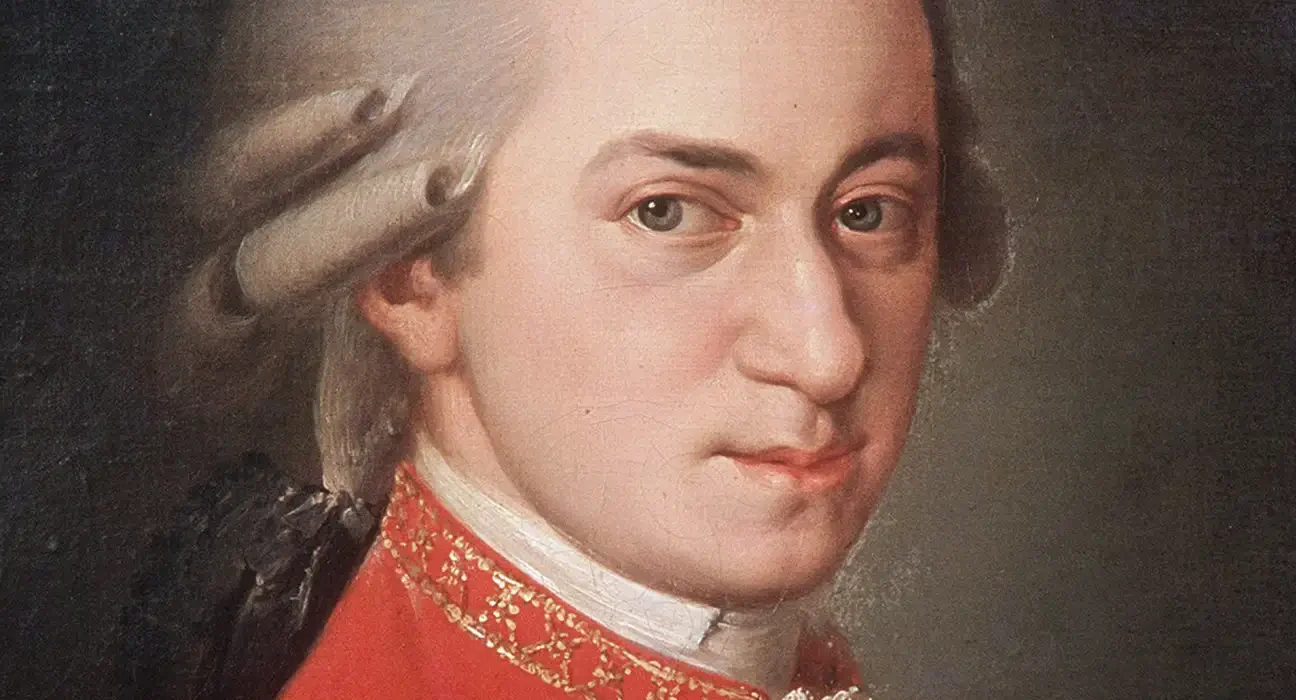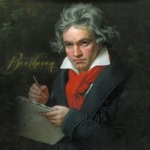Wolfgang Amadeus Mozart (1756 – 1791) is a name that resonates through the corridors of classical music history, evoking images of grand concertos and intricate symphonies. His genius transcended the mere act of composition; it became a profound exchange between emotions, cultures, and the very essence of the human experience. Born in Salzburg in 1756, Mozart lived a life woven with creativity, precocity, and tragedy. His works continue to inspire and provoke thought even centuries later, engaging listeners in a dialogue about life, emotion, and art.
Through this article, we will explore the multifaceted dimensions of Mozart’s life and artistry, delving into his remarkable journey as a prodigy, the emotional depth of his compositions, his cultural impact and legacy, the complexities of his personal life, and the enduring relevance of his music in today’s world.
The Prodigy and His Masterpieces
Mozart’s journey as a musical genius began in his early years, marked by an extraordinary talent that would shape the landscape of classical music forever. The story of Mozart is not only one of skill and proficiency but also one that intertwines with historical influences and personal experiences.
Early Life and Musical Beginnings

From the moment he drew breath, Mozart was surrounded by music. His father, Leopold Mozart, himself a composer and musician, recognized Wolfgang’s prodigious talent almost immediately. By age five, under his father’s guidance, Wolfgang was already playing keyboard pieces and composing simple works, exhibiting a natural affinity for melody and harmony that bewildered those around him.
The early exposure to performance opportunities — playing before European royalty and aristocrats — laid the groundwork for what would become a prolific career. As Mozart toured the courts of Europe with his family, he absorbed different musical styles, from the elegance of Italian opera to the rhythmic vitality of German folk music. This eclectic upbringing nurtured his ability to blend diverse traditions, allowing him to compose with remarkable versatility.
His ability to blend various musical styles is particularly striking in his operatic works. Pieces like “The Magic Flute” and “Don Giovanni” reflect a masterful integration of diverse traditions. Don Giovanni blends the grandeur of opera seria with the playfulness of opera buffa, while The Magic Flute reflects the German singspiel tradition, incorporating spoken dialogue alongside music. The way Mozart wove together different elements speaks to not just technical proficiency but an innate understanding of the human condition that transcends cultural boundaries.
The Influence of European Culture
As Mozart matured, he became increasingly aware of the societal and cultural currents that shaped his environment. The Enlightenment’s emphasis on reason, individual expression, and human emotions subtly found its way into his music. Mozart infused his works with themes that reflected contemporary ideas, from the humor and satire in The Marriage of Figaro to the depth of human struggle in Don Giovanni.
One of the hallmarks of Mozart’s music is its inherent capacity to evoke strong emotional responses, regardless of the listener’s background. His operas often illustrated the complexities of human relationships, showcasing characters that feel real in their joys and sorrows. The laughter and tears experienced by audiences during performances exemplify how Mozart’s work served as a mirror to society—reflecting the highs and lows of the human experience.
Masterpieces Beyond Compare
Throughout his career, Mozart produced over 600 works that include symphonies, operas, chamber music, and choral compositions. Each piece bears the unmistakable mark of his genius, marrying technical mastery with profound emotional depth. The symphonies, for instance, showcase his ability to construct complex musical architectures while maintaining a lyrical quality that enchants the listener.
Among his most celebrated works is the Requiem Mass in D minor, which remains hauntingly unfinished at the time of his death (later completed by his student, Franz Xaver Süssmayr). This piece stands as a testament to his stylistic evolution and personal introspection. It juxtaposes beauty and melancholy, providing insights into his contemplation of mortality and legacy. Through the complexity of counterpoint and harmonic interplay, the Requiem creates a sense of urgency and reflection, reminding us of our own vulnerabilities.
As we further delve into the intricacies of Mozart’s work, it becomes apparent that he was not merely a composer but a storyteller. Each composition serves as a vehicle through which he conveyed his deepest thoughts and feelings, inviting listeners to embark on a shared journey of discovery.
The Emotional Depth of His Music
Mozart’s compositions hold more than just melodic lines and harmonies; they encapsulate emotional landscapes that resonate deeply with listeners. His music acts as a conduit for exploring the intricacies of human emotions, enriching our understanding of joy, sorrow, and everything in between.
The Complexity of Human Emotions
What makes Mozart’s music so profoundly moving is its ability to capture the full spectrum of human emotion. Whether it’s the exuberance found in “Eine kleine Nachtmusik” or the poignant reflections present in his piano concertos, each note seems to echo the feelings of the composer himself. Listening to Mozart is akin to embarking on a journey through a vast emotional landscape, where every turn offers new insights and revelations.
Consider the contrast between lighthearted melodies and somber undertones in his work. For instance, the duet “La ci darem la mano” from “Don Giovanni” exudes charm and seduction, yet beneath its surface lies a subtle interplay of power and persuasion. Mozart’s ability to weave emotional complexity into his compositions is even more apparent in arias like Dove sono from Le Nozze di Figaro or Ach, ich fühl’s from Die Zauberflöte, where vulnerability and longing are deeply embedded in the music.
Reflections on Mortality and Legacy
Mozart’s preoccupation with themes of mortality and human transience is evident in his Symphony No. 40 in G minor, K. 550. This symphony, one of only two he composed in a minor key, carries an unmistakable sense of urgency and unrest. Unlike his more buoyant works, Symphony No. 40 is filled with a restless energy, as if grappling with existential questions that remain unanswered. The opening movement, with its relentless pulsing rhythm and melancholic yet passionate phrasing, reflects an underlying tension that speaks to the uncertainties of life.
Another poignant work that echoes Mozart’s reflections on mortality is his Masonic Funeral Music, K. 477. Composed in 1785 for a Masonic memorial service, this piece is solemn and deeply reverent, embodying the solemnity of loss and remembrance. The dark, rich harmonies and slow-moving phrases create an atmosphere of introspection, inviting listeners to contemplate life’s impermanence and the bonds that persist beyond death.
Emotional Expression Through Musical Craftsmanship
Mozart’s ability to convey deep emotions in his music stems from his masterful use of harmony, rhythm, and orchestration. He often employed sudden shifts between major and minor keys to reflect contrasting emotions, as heard in Piano Concerto No. 20 in D minor, K. 466, where the stormy tension of D minor gives way to a serene, hopeful middle movement.
Orchestration further enhances Mozart’s emotional storytelling. In Clarinet Concerto in A major, K. 622, the warm, flowing clarinet lines evoke nostalgia and introspection, while his use of sighing, expressive phrases in arias like Porgi, amor from Le Nozze di Figaro draws listeners into the raw vulnerability of his characters. Through these techniques, Mozart turned music into a mirror of human emotions, creating works that continue to resonate with audiences today.
Cultural Impact and Legacy
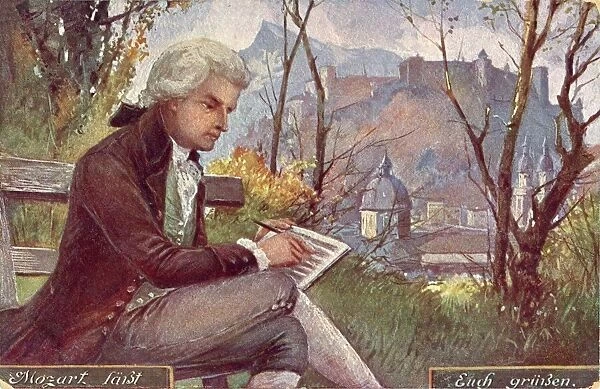
The influence of Wolfgang Amadeus Mozart extends far beyond the concert hall, permeating various aspects of culture, art, and even modern technology. His music has become a universal language, speaking to the hearts and minds of people across the globe.
The Universality of Mozart’s Music
Mozart’s compositions transcend geographical and temporal boundaries, making them relevant in diverse cultural contexts. From films scores to advertisements, his melodies have woven themselves into the fabric of contemporary life, serving as a backdrop for storytelling and emotional resonance.
For example, the use of Mozart’s music in popular films showcases the timeless appeal of his work. Whether it’s the playful strains of “Rondo alla Turca” or the dramatic swells in his symphonies, filmmakers utilize his compositions to elicit specific emotional responses from audiences. The recognition of his music in such contexts reinforces its universal nature and highlights the ways in which it continues to shape artistic narratives.
Mozart in Popular Culture
Beyond classical music, Mozart’s influence seeps into popular culture, finding expression in unexpected mediums. Video games, for instance, have embraced his compositions, incorporating them into soundtracks that enhance the gaming experience. Titles that feature classical music benefit from the rich emotional depth that Mozart’s work imparts, enriching gameplay and immersing players in a multi-sensory experience.
Moreover, references to Mozart appear in literature, theater, and visual arts, illustrating his status as a cultural icon. Artists and writers often draw inspiration from both his life and his compositions, depicting him as a symbol of creativity, genius, and the complexities of human ambition. This continued exploration of his legacy speaks to the enduring power of his work and its capacity to inspire future generations.
The Mozart Effect: Bridging Science and Art
The term “Mozart Effect” refers to a phenomenon suggesting that listening to Mozart can enhance cognitive abilities and foster creativity. This idea has sparked significant interest and research, prompting discussions around the relationship between music and brain function.
Studies have indicated that exposure to Mozart’s compositions may lead to temporary increases in spatial-temporal reasoning skills, which are essential for problem-solving and critical thinking. This fascinating connection between music and cognition has led educators to explore innovative ways to incorporate classical music into curricula, fostering both artistic appreciation and intellectual growth among students.
Furthermore, the implications of the Mozart Effect extend into therapy and wellness practices, as music is increasingly recognized for its ability to alleviate stress and promote emotional well-being. Incorporating Mozart’s music into mindfulness practices or relaxation techniques can offer individuals a pathway to emotional healing, reinforcing the idea that art and science can intersect in meaningful ways.
A Complex Personal Life
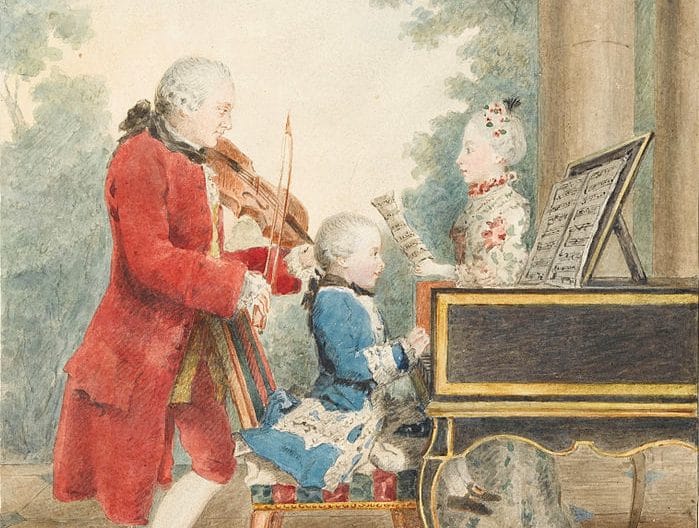
Despite being hailed as a monumental figure in the arts, Mozart’s life was not solely one of triumph. His personal struggles—financial difficulties, familial tensions, and societal pressures—paint a nuanced picture of the man behind the music.
Financial Struggles and Societal Pressures
While Mozart enjoyed financial success during parts of his career, particularly in Vienna, his later years were marked by increasing economic instability. His reliance on commissions and his extravagant lifestyle contributed to financial difficulties, which were further exacerbated by shifting musical trends and the loss of patronage.
Mozart’s personal letters often reveal his anxieties about money, as he had to secure patronage and commissions. Even so, his compositions remained artistically ambitious, displaying a remarkable balance of elegance and emotional depth. His ability to create music of profound beauty amid financial uncertainty underscores his resilience and unwavering dedication to his craft.
Familial Relationships
Alongside financial struggles, Mozart’s relationships with his family were marked by both love and tension. While he had a close bond with his father, Leopold, this relationship was complicated by differing aspirations and expectations. Leopold preferred that Mozart secure a stable court position, similar to many composers of the time, while Wolfgang sought artistic and financial independence in Vienna.
The strain between familial obligation and personal ambition created internal conflict for Mozart, and these tensions are reflected in his music. Die Zauberflöte (The Magic Flute) presents a striking portrayal of familial conflict through the turbulent relationship between the Queen of the Night and her daughter, Pamina. Rather than offering maternal warmth, the Queen manipulates and pressures Pamina, demanding that she murder Sarastro to prove her loyalty. This coercion highlights the complexities of parental control, where love is entangled with dominance and expectation.
Pamina’s struggle to assert her independence mirrors broader themes of personal growth and self-determination. As she resists her mother’s influence and chooses her own path alongside Tamino, the opera transforms into a narrative of liberation from toxic familial bonds. Through this dynamic, Mozart not only explores the tensions within parent-child relationships but also underscores the universal journey of breaking free from oppressive influences to find one’s true identity.
The Artist Behind the Music
Amidst his struggles, Mozart’s tenacity and resilience shine through. His ability to channel personal hardships into his art allowed him to create masterpieces that resonate across generations. His journey serves as a reminder that even the most revered figures endure challenges that can overshadow their achievements. By embracing his complexities, we gain insight into the struggles faced by countless artists who dare to share their voice with the world.
The Enduring Relevance

In a rapidly changing world, Mozart’s legacy continues to inspire not only musicians but also thinkers, innovators, and artists across disciplines. His music serves as a testament to the boundless nature of creativity, reminding us that true artistic expression transcends time and remains deeply relevant in contemporary society.
Mozart as a Source of Innovation
The brilliance of Mozart lies not only in the beauty of his melodies but also in his daring experimentation with musical form, harmony, and structure. His ability to push artistic boundaries serves as a model for innovation, inspiring creators in fields beyond music—including literature, film, and even technology. Just as he revolutionized classical music in his time, his works continue to encourage modern artists to challenge conventions and explore new forms of expression.
A Timeless Connection with Audiences
Despite being composed centuries ago, Mozart’s music retains an emotional immediacy that speaks to listeners today. His compositions capture the full spectrum of human emotions—joy, sorrow, longing, and triumph—offering audiences a mirror through which they can see their own experiences reflected. Whether through the elegance of his piano concertos or the dramatic intensity of his operas, his music fosters a sense of shared humanity that remains as powerful now as it was in his own era.
Engaging with the Classics
Finally, engaging with Mozart’s music invites us to participate in an ongoing conversation with history. The experience of listening to his compositions links us to past generations who found solace and inspiration within his works. This continuity of experience emphasizes the universality of art—a shared bond that transcends time and space.
In today’s world, where technology facilitates instant access to music, we find ourselves at a crossroads. How can we honor the legacy of composers like Mozart while embracing the innovations of contemporary artistry? This question invites exploration, challenging us to seek balance between tradition and modernity. The enduring relevance of Mozart’s work ultimately lies in our willingness to engage with it, allowing the past to inform the present while paving the way for future generations of artists.
Conclusion
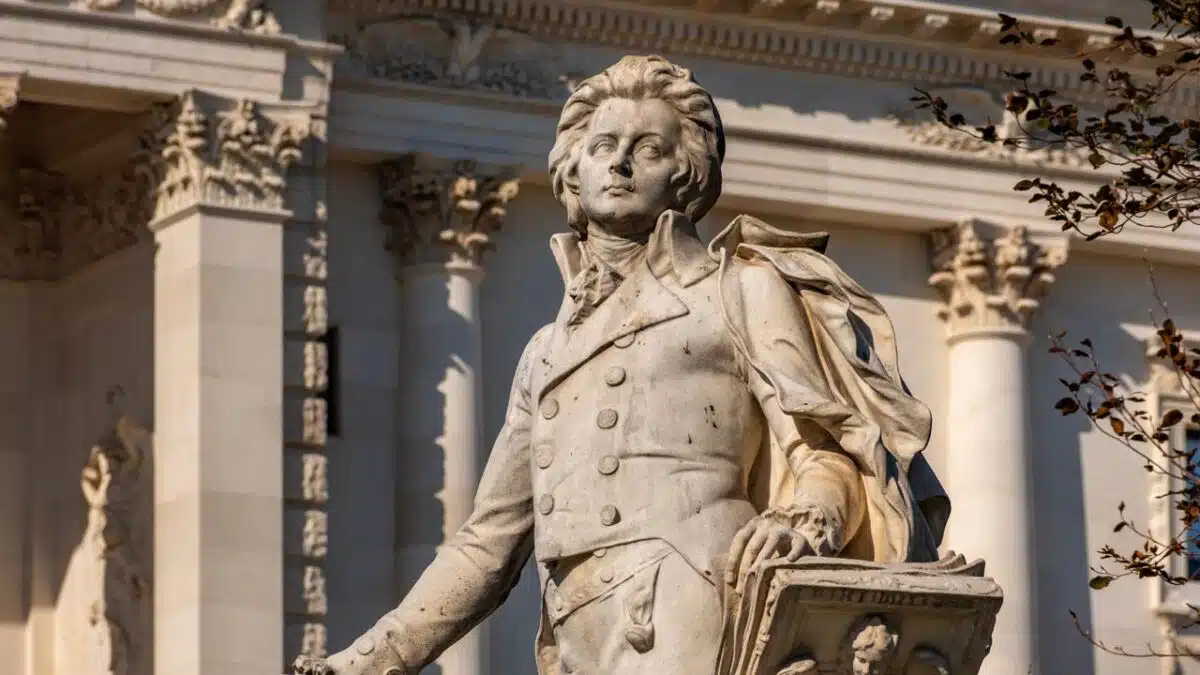
Wolfgang Amadeus Mozart stands as a monumental figure in the arts, embodying the interplay between genius and the human experience. His life and works remind us that creativity is a fundamental component of our existence, capable of transcending barriers and connecting individuals across time and space. The emotional depth of his music, coupled with the complexities of his personal journey, paints a rich tapestry that continues to resonate with audiences today.
Engaging with Mozart’s compositions invites us not just to listen but to reflect, feel, and connect with our own stories. As we navigate modern challenges, the lessons embedded in his music compel us to embrace creativity as a vital aspect of our lives. In a world that often feels fragmented, Mozart’s legacy invites us to partake in a timeless dialogue about life, emotion, and art—profoundly reminding us of our shared humanity and the enduring power of creativity.




